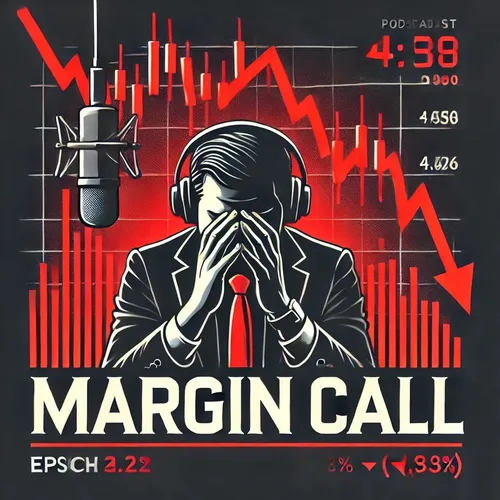Margin Calls and Short Positions: Intertwined Risks Shaping Market Dynamics
- Author
- Quiet. Please
- Published
- Sat 02 Aug 2025
- Episode Link
- https://www.spreaker.com/episode/margin-calls-and-short-positions-intertwined-risks-shaping-market-dynamics--67228094
Margin calls and short positions are deeply intertwined concepts that significantly impact market dynamics and risk management for traders. When a listener considers a margin call, it’s important to understand that margin trading involves borrowing capital from a broker to amplify a trade’s size. The assets in the account act as collateral, and if the value of those assets falls below a certain threshold—known as the maintenance requirement—the broker will issue a margin call. That call is a demand for the trader to deposit more cash or securities to restore the account’s value, or the broker might forcibly close positions to cover potential losses. According to Wells Fargo Advisors, a margin call occurs when pledged securities fall below those maintenance requirements, putting the account in jeopardy if additional funds are not promptly added.
Short positions play a central role in margin calls. A short sale happens when a trader borrows shares and immediately sells them, aiming to buy the same shares back later at a lower price, keeping the difference as profit. To even attempt short selling, a trader must have a margin account, as the process inherently involves borrowing—this time, shares instead of cash. NerdWallet explains that the margin account must typically have collateral equivalent to at least half the value of the shorted stock at the outset, and then a continuing margin of at least 25 percent must be maintained while the position is open. Brokerages can set requirements even higher, depending on the riskiness of the stock and the overall value of the trader’s account.
For short sellers, trouble begins when the price of the borrowed stocks rises significantly instead of falling. If the stock price climbs, the short seller owes more to buy shares back and return them to the broker, pushing the account’s net equity below maintenance margin levels. That’s when the infamous margin call rings. At this stage, the short seller has two options: inject more capital to stabilize the account or allow the brokerage to forcibly close out the position, sometimes at a substantial loss. As margin calls often signal mounting losses, and as seen in headline examples with highly shorted stocks, they can trigger chain reactions: the need to buy back shares at higher prices fed by margin calls can itself propel prices further upward, a phenomenon known as a short squeeze.
A short squeeze famously happens when a heavily shorted stock’s price soars rapidly, and margin calls force traders to buy shares en masse to close out losing positions. The buying pressure from covering shorts can push the stock price even higher, catching more traders in the squeeze and compounding losses. The saga involving GameStop in early 2021 provides a case-in-point, where coordinated buying led to exponential price increases, margin calls across the board, and even liquidation of hedge fund positions.
While taking short positions offers the chance to profit from declining stock prices, the risk is theoretically unlimited—there’s no cap on how high a stock price can climb, and thus no cap on how much a short seller can lose. Margin requirements and margin calls are in place to protect both the investor and the brokerage from such runaway losses.
In summary, margin calls represent one of the most critical risk control mechanisms in leveraged trading, especially for those holding short positions. When short sellers find themselves on the wrong side of a price swing, they risk more than just losing the bet—they might be forced to exit under financial duress, sometimes accelerating broader market moves. For any listener considering margin trading or short selling, understanding the mechanics and risks of margin calls is not just academic—it’s essential for financial survival.
Thank you for tuning in, and don’t forget to subscribe. This has been a Quiet Please production, for more check out...
